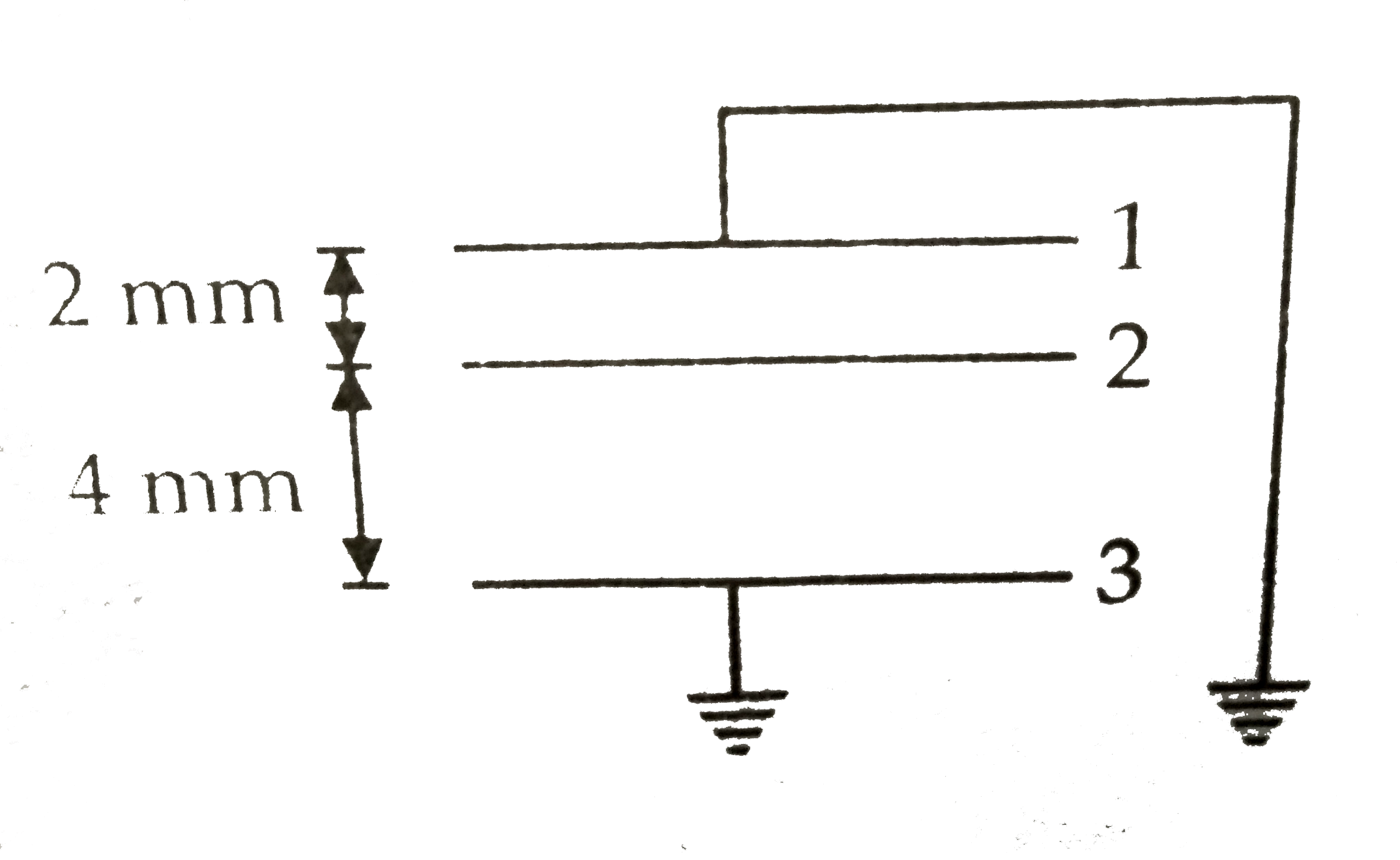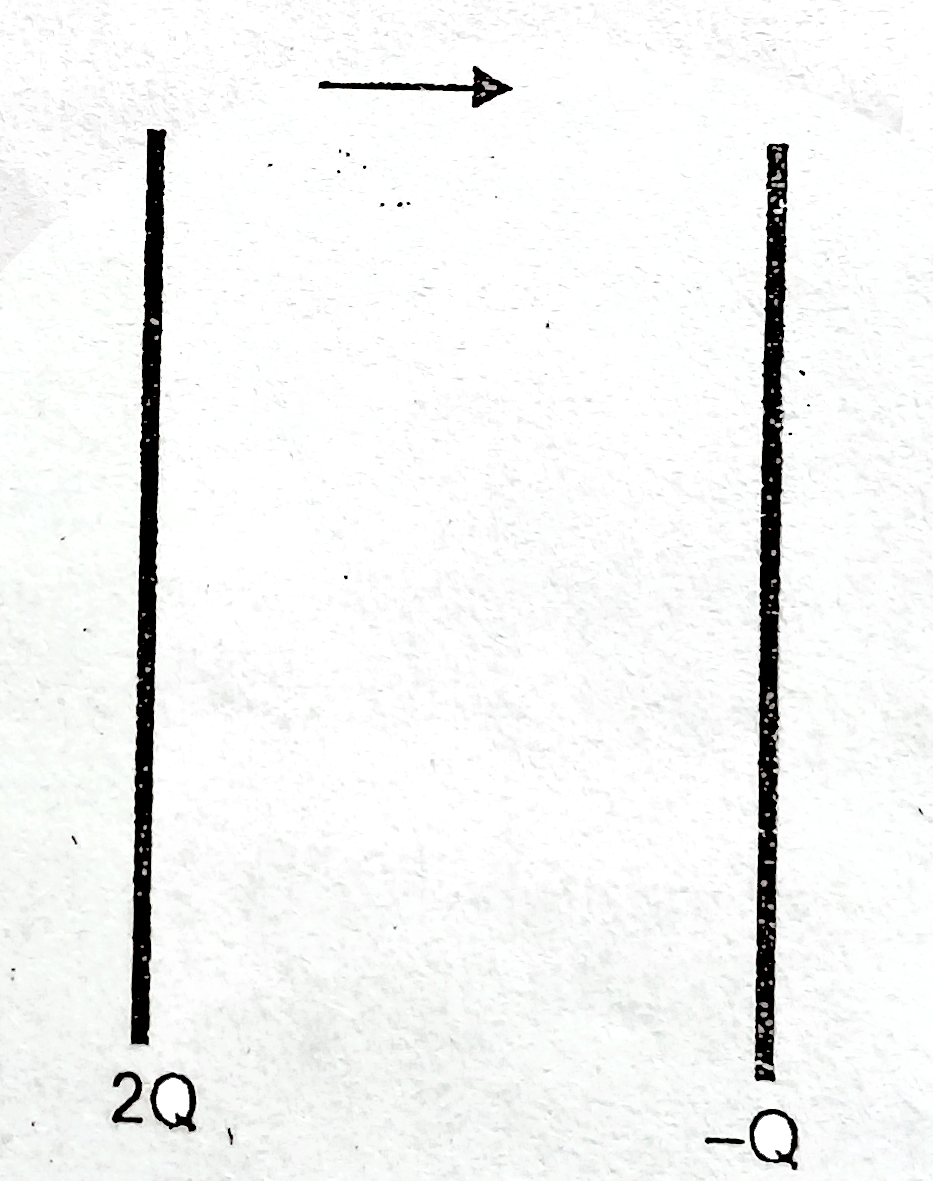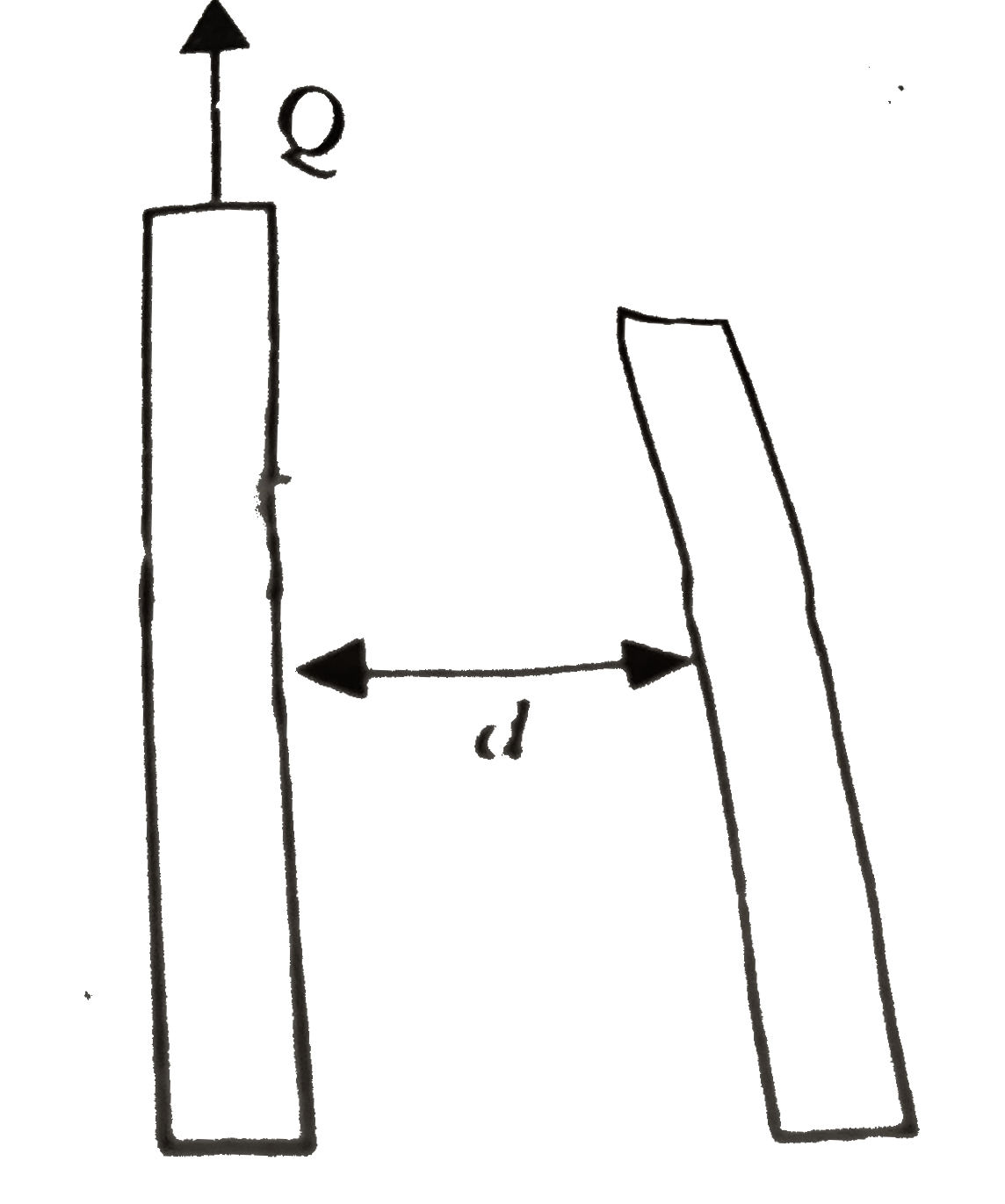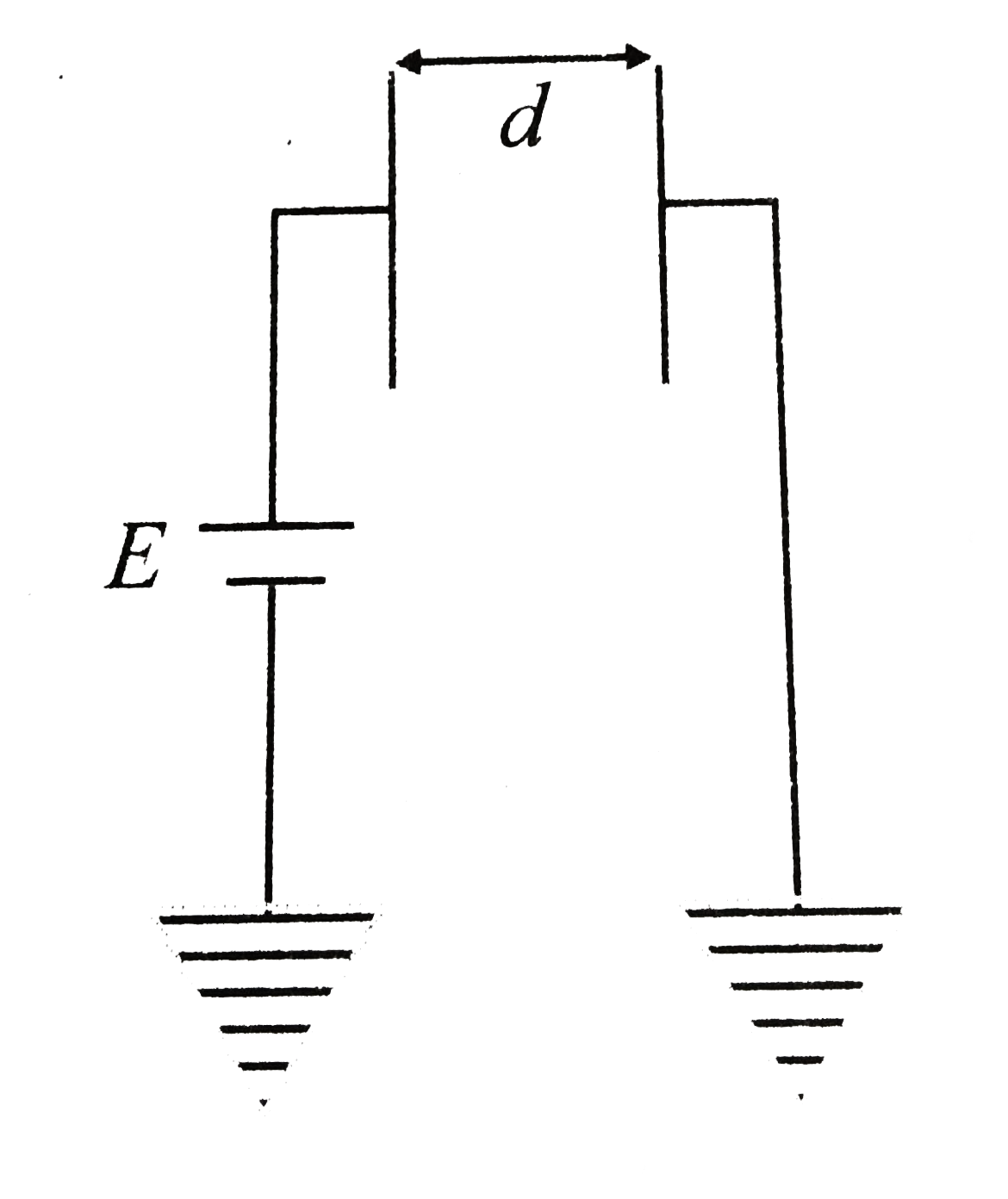Two parallel conducting plates of area A=2.5m2 each are placed 6 mm apart and are both earthed. A third plate, identical with the first two, is placed at a distance of 2 mm from one of the earthed plates and is given a charge of 1 C. The potential of the central plate is

6×107V
3×107V
4×107V
2×107V
The correct Answer is:A
The plates 1 and 2 will form one capacitor and plates 2 and 3 and another capacitor . These tow capacitor are in parallel. Their effective capacitance is C=ε0Ad+ε0A2d=32ε0Ad
Potential of central plate, V=QC=Q2d3ε0A
=1×2×2×10−33×8.85×10−12×2.5≈=6×107V
Topper's Solved these Questions
- BOOK - NCERT FINGERTIPSCHAPTER - ELECTROSTATIC POTENTIAL AND CAPACITANCE EXERCISE - Energy Stored In Capacitor18videos
ELECTROSTATIC POTENTIAL AND CAPACITANCE
- BOOK - NCERT FINGERTIPSCHAPTER - ELECTROSTATIC POTENTIAL AND CAPACITANCE EXERCISE - Van De Graaff Generator5videos
ELECTROSTATIC POTENTIAL AND CAPACITANCE
- BOOK - NCERT FINGERTIPSCHAPTER - ELECTROSTATIC POTENTIAL AND CAPACITANCE EXERCISE - Effect Of Dielectric On Capacitance6videos
ELECTROSTATIC POTENTIAL AND CAPACITANCE
- BOOK - NCERT FINGERTIPSCHAPTER - ELECTROMAGNETIC WAVESEXERCISE - Assertion And Reason15videos
ELECTROMAGNETIC WAVES
- BOOK - NCERT FINGERTIPSCHAPTER - MAGNETISM AND MATTER EXERCISE - Assertion And Reason15videos
MAGNETISM AND MATTER
Similar Questions
A parallel plate capacitor has capacitance of 1.0F. If the plates are 1.0mm apart, what is the area of the plates?
View SolutionA metal plate of radius 20 cm is charged positively to a potential of 6000 volts and placed at a distance of 5 cm from a parallel earth connected plate .Find the total pull between the plates .
View Solution
Knowledge Check
- Question 1 - Select One
The space between two large horizontal metal plates, 6cm apart, is filled with a liquid of viscosity 0.8N/m2 . A thin plate of surface area 0.01m2 is moved parallel to the length of the plate such that the plate is at a distance of 2m from one of the plates and 4cm from the other. If the plate moves with a constant speed of 1ms−1, then
Athe layer of the fluid, which is having the maximum velocity, is lying mid-way between the platesBthe layers of the fluid, which is in contact with the moving plate, is having the maximum velocityCthe layer of the fluid, which is in contact with the moving plate and is on the side of farther plate, is moving with the maximum velocityDthe layer of the fluid, which is in contact with the moving plant and is on the side of nearer plate, is moving with the maximum velocity - Question 2 - Select One

Two large parallel conducting plates of net charge 2Q and −Q are placed in a uniform external electric field Q2Aε0 prependicular to plates as shown. The surface area of each plates is A. The charge on the left surface of the left plate and right surface of the right plate are respectively.AQ/2 ad −3Q/2BQ an 0C0 and QDQ/2 and Q/2 - Question 3 - Select One
Two parallel conducting plates, each of area A, are separated by a distance d. Now, the left plate is given a positive charge Q. A positive charge q of mass m is released from a point near the left plate. Find the time taken by the charge to reach the right plate.
 A(√3dmε0AqQ)B(√4dmε0AqQ)C(√2dmε0AqQ)Dnone of these
A(√3dmε0AqQ)B(√4dmε0AqQ)C(√2dmε0AqQ)Dnone of these
Two parallel conducting plates of a capacitor of capacitance C containing charges Q and -2Q at a distance d apart. Find out potential difference between the plates of capacitors.
View SolutionA parallel plate capacitor is constructed with plates of area 0.0280m2 and separation 0.550mm. Find the magnitude of the charge on each plate of this capacitor when the potential between the plates is 20.1V
 View Solution
View SolutionA parallel plate capacitor has capacitance of 1.0F. If the plates are 1.0mm apart, what is the area of the plates?
View SolutionThe p.d between two plates separated by a distance of 1mmis100V.The force on an electron placed in between the plates is
View SolutionTwo plates, each of area A, are placed parallel to each other at a distance d. One plate is connected to a battery of emf E and its negative is earthed. The other plate is also earthed. The charge drawn by plate is
 View Solution
View Solution

